Palau Güell
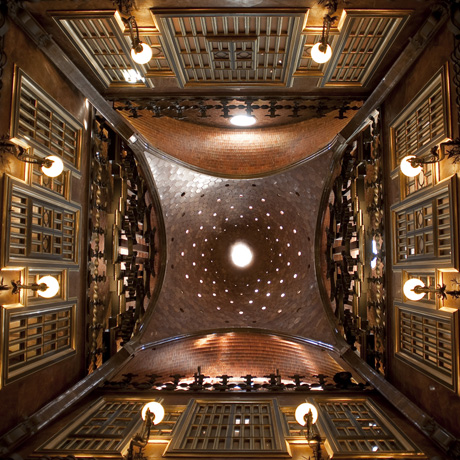
YEAR OF CONSTRUCTION
1886 - 1890
ADDRESS
Carrer Nou de la Rambla, 3 - 5, Barcelona
http://palauguell.cat/The Güell Palace was a milestone of European architecture in its time and it may be considered one of the pioneering buildings of the Art Nouveau movement, standing out above all for its innovative conception of space and light. In this building, Gaudí applied a set of highly diverse solutions based on very personal approaches, and he used his imagination to create some exceptionally expressive forms, working with high-quality traditional materials (stone, wood, wrought iron, ceramics, glass, etc.).
The construction of the Güell Palace represents the zenith of Gaudí’s youthful period. Here he further developed the solutions tested in earlier projects while introducing a large part of the features which would come to form the basis of his subsequent repertoire.
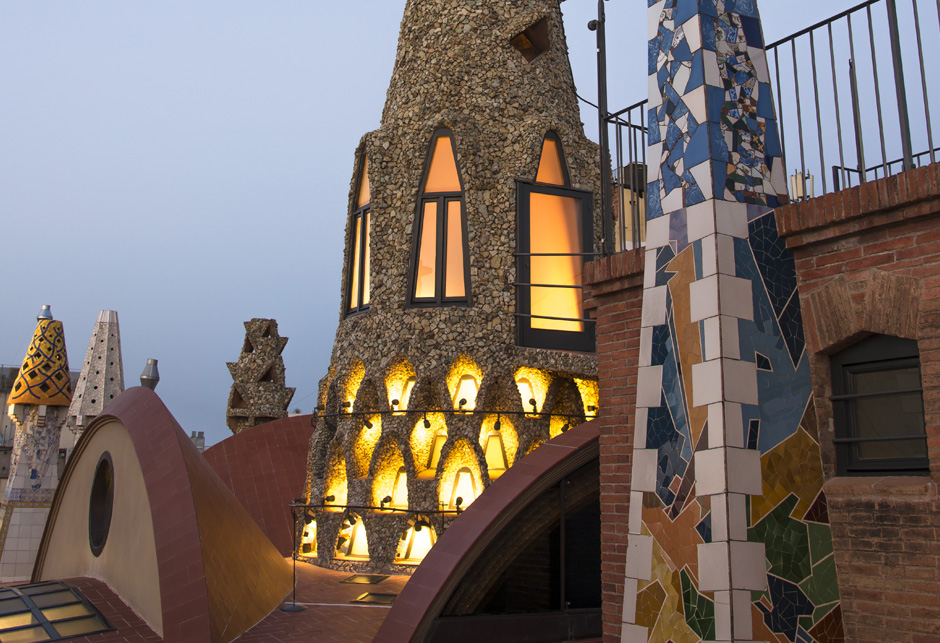
FIRST-CLASS MATERIALS AND ASSISTANTS
The businessman and industrialist Eusebi Güell, increasingly fascinated by the architect’s work, commissioned Gaudí to build his residence in the centre of Barcelona, between the streets Conde del Asalto (now Carrer Nou de la Rambla), Lancaster and the Rambla. The building was to be Güell’s family residence as well as a social and cultural venue and a meeting place of the bourgeoisie.
The reason why Count Güell chose to build his residence in the Raval district and not in the Eixample – then the emerging bourgeois neighbourhood – was the proximity of the Güell Palace to the old Güell House, which was the paternal residence he had inherited some years earlier. Gaudí found some excellent solutions to the challenge which was posed to him: he would build a residence that would become an important gathering place of the elites right in the middle of a heterogeneous neighbourhood where there was little available space and light.
He used the best materials to build it, including, for example, the stone from the quarries owned by Güell in the region of El Garraf, and he also enlisted the work of the most brilliant professionals of the times, such as the architect Francesc Berenguer, who would become one of his most loyal assistants.
The building was inaugurated in 1888, coinciding with the Universal Exposition held in Barcelona’s Ciutadella Park.
GROUNDBREAKING ELEMENTS
The Güell Palace is the only newly constructed building that Gaudí was able to finish completely and it has the honour of being the one that is best preserved because it never underwent any substantial modifications. In the main entrance one may see two doors with a catenary arch profile which must have been particularly striking when they were built since they are unusually large. Gaudí conceived the carriage space as an extension of the street so the vehicles would be able to drive in and out easily, a very innovative system at that time.
The basement contains one of the most unique spaces: the horse stable. The unusual pillars and vaults here create a remarkable landscape while forming an important (and trafficable) part of the building’s foundations. The stables were also reached by way of a spiral ramp, which was yet another example of the architect’s originality.
INNOVATIVE TECHNIQUES FOR GAINING SPACE AND LIGHT
The Güell Palace is of great interest for its suggestive conception of space and light. This may be seen in the organisation of the interior spaces pivoting around the central hall, which is three stories high and is covered by a parabolic dome of celestial reminiscences. Around this hall, Gaudí distributed the rooms of the building in a completely functional way, creating plays of perspective that give the Güell Palace a sensation of great size although it actually stands on a relatively small plot.
Entering the central hall is one of the most striking sensory experiences of the whole palace. This space was conceived as a concert hall in which the organ plays the leading role and the dome acts as a great sounding box. The restoration of the original wooden pipes of the organ and the acquisition of a new console allows visitors to hear the excellent acoustics of this space during their tour since every thirty minutes one of the musical pieces which the Güell family enjoyed when they lived here is played.
The room prior to the entrance of the central hall, called the hall of lost steps, is one of the places where it becomes most evident that Gaudí had to use his imagination to make up for a lack of space. He found the solution by creating a façade divided into three planes. Another remarkable area of the building is the smoking room or lounge, whose bulging and overhanging bay window stands out clearly over the southern courtyard.
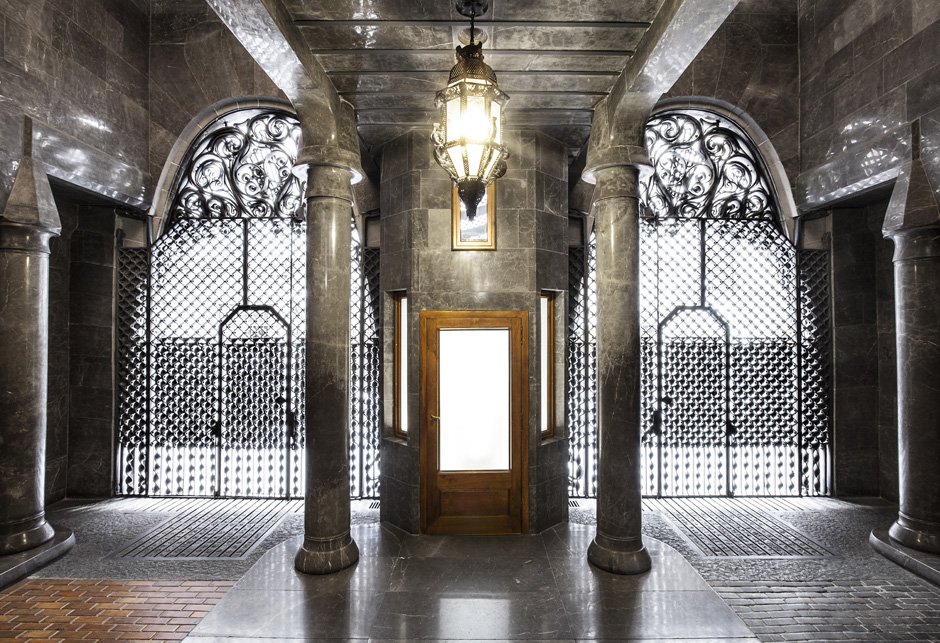
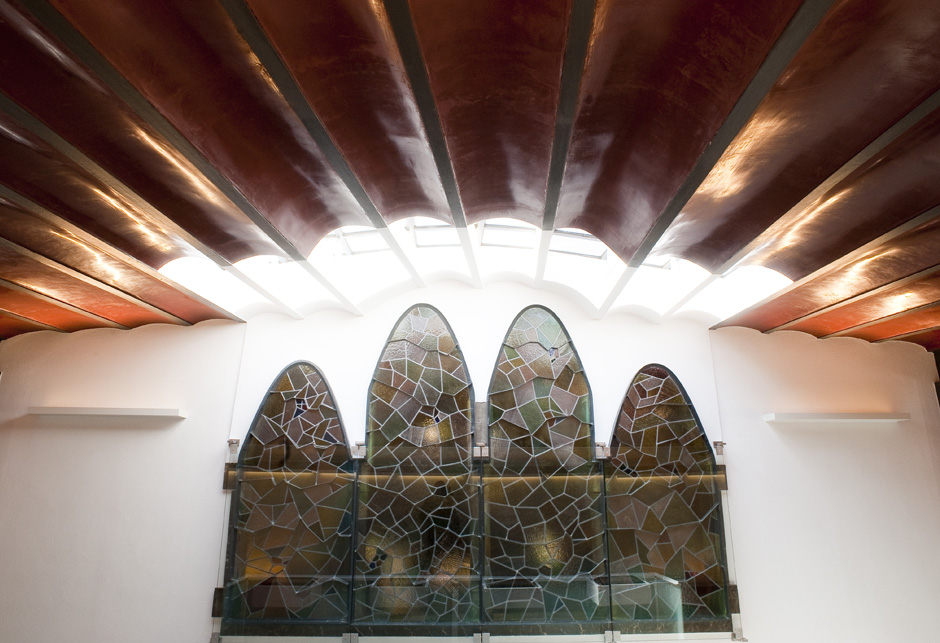
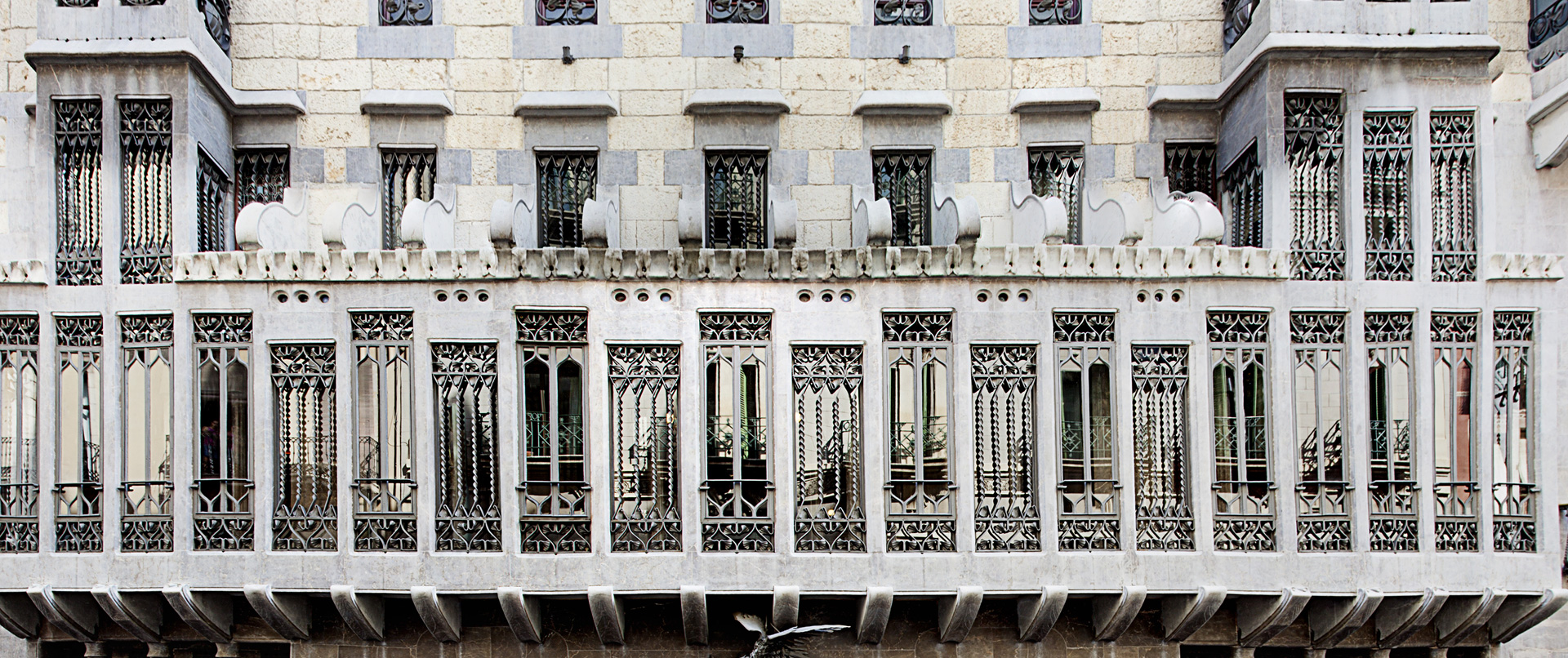
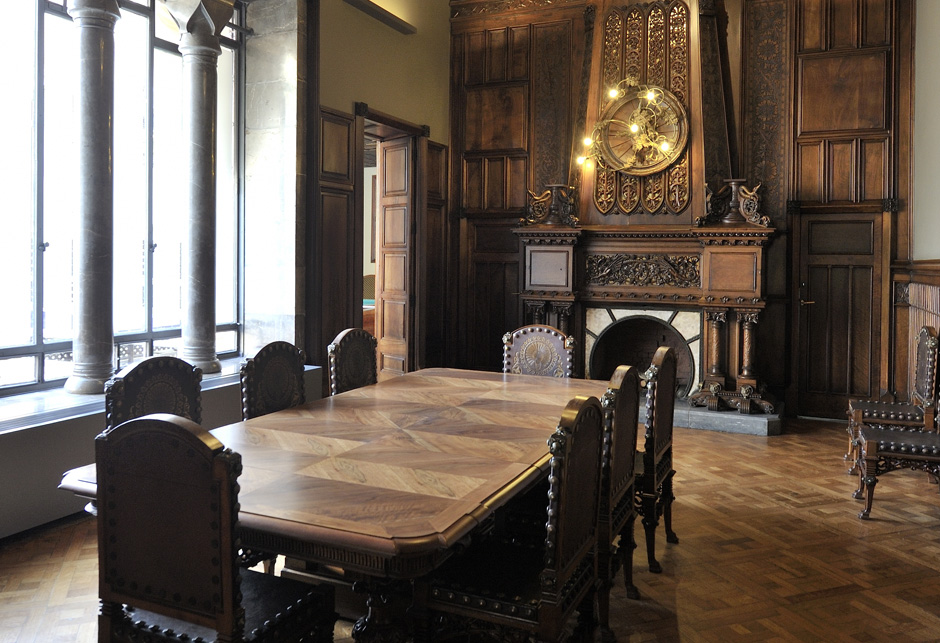
FIRST ICONIC ROOF TERRACE
The roof terrace is an example of the unique language that Gaudí used at the Güell Palace. Its 481 sq.m. are distributed on four levels: the largest one is over the central body of the building and contains fourteen chimneys, four dormers in the shape of shells or parabolic arches, skylights and the lantern of the central dome. A few stairs up one comes to the second level, over the annexed body of the building, with another six chimneys built of facing brick. The third level is where the service stairway hut is located, while the fourth level is the site of the conical spire.
Here, for the first time, Gaudí transformed the cowls of conventional chimneys into sculptural elements clad with trencadís mosaic. In the middle there is a spire which is covered with sandstone from the walls of lime kilns and topped with a lightning rod bearing a wind rose, a bat and a Greek cross. Although the materials used throughout the building are quite traditional (stone, wood, ceramics, etc.), Gaudí’s revolutionary use of them provides spectacular results.
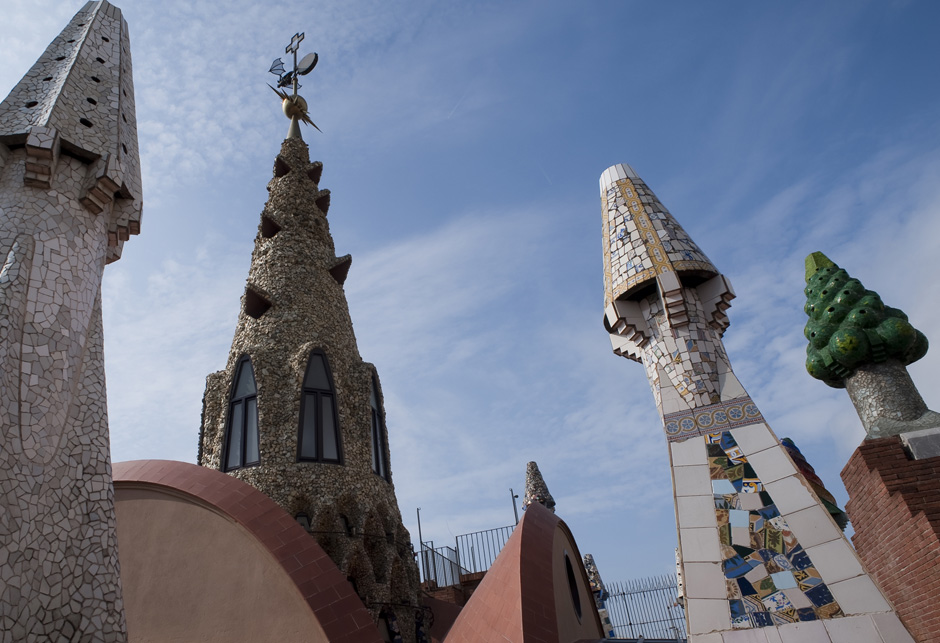
ALMOST CARRIED OFF TO THE USA
The Güell Palace went through a series of difficulties after it was inherited by the widow and children of Count Güell. During the Spanish Civil War it was used as a police station and in 1944 it was about to be bought by an American millionaire, who intended to ship it home stone by stone. Finally, Mercè Güell, Eusebi Güell’s youngest daughter, gave the building to the Barcelona Provincial Council in exchange for an annuity and on the condition that the building would be preserved and be given a cultural use.
In 1952 the Association of Friends of Gaudí installed itself there and from the end of the 1950s until 1996 it was home of the Theatre Institute.
In 1984 it was listed as a World Heritage Site by UNESCO for its exceptional universal value in the “Works of Gaudí” section, and during the last twenty years various restoration works have been carried out on it. These works have included an integral restoration which helped to provide an in-depth knowledge of the building, the restoration of the structural and ornamental elements, and the museumization of the building in 2011. The Güell Palace reopened its doors to the public in that same year.
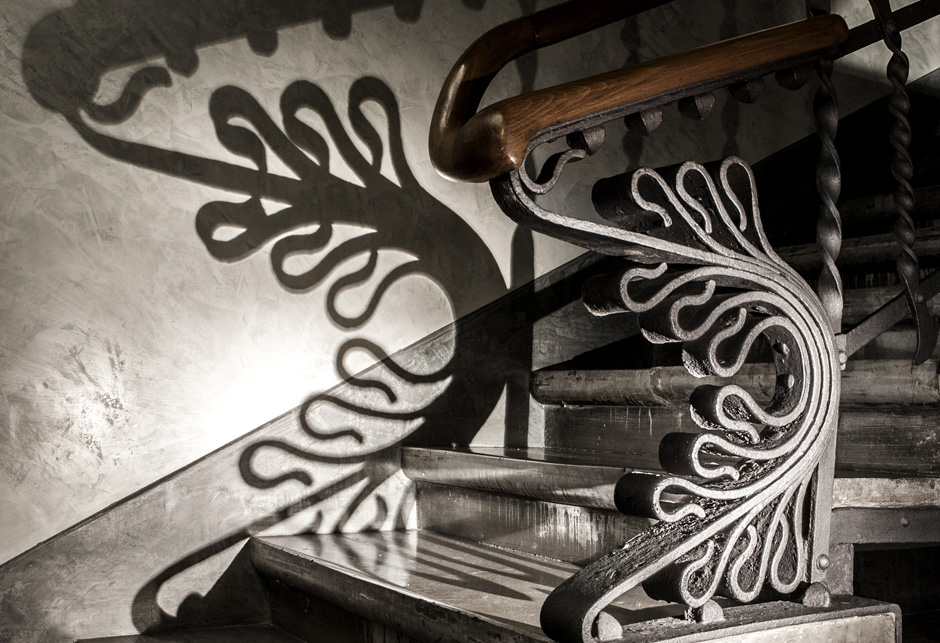
OPENING HOURS
Open from Tuesday to Sunday and on public holidays
Summer timetable (1 April to 31 October), 10:00-20:00 h
Winter timetable (1 November to 31 March), 10:00-17:30 h
Closed Monday (except on public holidays), 1 and 6 January, third week of January for annual maintenance, and 25 and 26 December
HOW TO GET THERE
Metro: L3 - Liceu
Bus: 14, 59, 91, 120
FGC train: L6, L7, S1, S2, S5, S55, Plaça de Catalunya
SERVICES
Educational service, renting of spaces, press and store